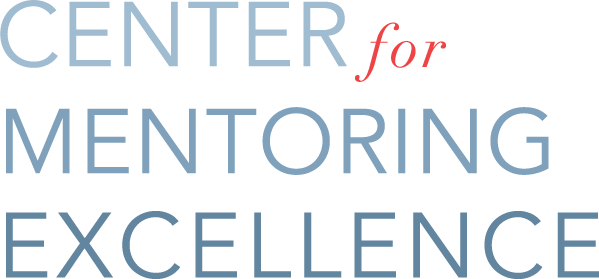by Center for Mentoring Excellence | Jun 26, 2013 | Uncategorized
If your organization is preparing to launch a mentoring initiative, you may be wondering where to begin. Here are six tasks to add to your to-do list:
1. Make sure the business case for mentoring aligns with your organization’s strategic direction.
2. Develop job descriptions for your Mentoring Oversight/Advisory Team, their individual member roles and responsibilities, and the person who will manage your mentoring program.
3. Develop a policy statement outlining mentoring expectations.
4. Create a budget that covers training and resources, including a salary/stipend for the mentoring point person.
5. Develop a strategic communication plan for broadcasting mentoring messages to all stakeholders.
6. Allocate virtual space to house information and mentoring resources.
by Center for Mentoring Excellence | Jun 12, 2013 | Uncategorized
A good mentoring closure experience offers mentors and mentees an opportunity to take stock and plan for the future. Not everyone is comfortable with having a closure conversation.
“There’s a trick to the ‘graceful exit.’ It begins with the vision to recognize when a job, a life stage, or a relationship is over — and let it go. It means leaving what’s over without denying its validity or its past importance to our lives. It involves a sense of future, a belief that every exit line is an entry that we are moving up, rather than out.” (Ellen Goodman)
 The Payoff:
The Payoff:
- Good closure offers an opportunity to maximize and leverage learning. Spend time creating a shared sense of progress as you bring your relationship to a close. Whether you are a mentor or mentee, preparing in advance for final mentoring meeting will help you maximize and leverage your learning. Ask yourself the following questions: In what ways have I grown and developed? What have I learned about myself? How has that learning contributed to my professional development?
- Good closure offers an opportunity for both mentor and mentee to move on gracefully. Never close the door to a mentoring relationship without opening the next door. Once you’ve reviewed what you’ve learned, spend time talking about the future and the next step in your learning and development journey.
- Good closure creates developmental momentum that extends far beyond the lifecycle of the mentoring relationship. Mentoring partners often come away with significantly deep learning that is sustainable over time. Think about your mentors, past and present. Chances are your mentors’ wisdom resides within you as the “voice in your head.”
- Good closure offers an opportunity to return. Your relationship with your mentoring partner will be different once the mentoring relationship ends. You may decide to continue the relationship on an ad hoc basis or informally. Be proactive and talk about these changes before they take place. Once you have redefined your relationship, it is time to “let go” of the relationship as it was and embrace it as it will be.
Takeaway: According to author Sara Lawrence-Lightfoot , “We’re always in a hurry to move forward. We don’t like to look back,” to reflect (USA Weekend, September 9, 2012). And yet, this is precisely what is required to experience good closure of a mentoring relationship.
by Center for Mentoring Excellence | Jun 10, 2013 | Advice for Leaders
If you are like most people, you want to look good in front of your boss. (more…)
by Center for Mentoring Excellence | Jun 7, 2013 | Advice for Leaders
 Many organizations incorporate 360-degree feedback assessment into leadership development programs. (more…)
Many organizations incorporate 360-degree feedback assessment into leadership development programs. (more…)
by Center for Mentoring Excellence | Jun 5, 2013 | Making Mentoring Work For You
Organizations need to support and pay attention to informal as well as formal mentoring within their organization. Both are important and critical to employee growth and development.
How do you differentiate the two?
Formal mentoring is commonly associated with the words organized, proscribed, structured, facilitated and supported. While these words describe many mentoring programs, the term itself actually refers to mentoring that is conducted under the umbrella of an organizational entity. Program parameters are defined and include structural and accountability mechanisms. There are programmatic and relationship expectations, requirements for eligibility and program goals and outcomes that give mentoring its formal feel.
Informal mentoring, in contrast, is usually described as unstructured, casual, need-based, and natural. For example, you may have identified someone in whom you see great promise and who could benefit your experience or someone may have approached you and asked you to mentoring them. Informal mentoring relationships can, and often do, run the gamut from casual catch-as-catch-can conversations or situational and information sharing to structured and “formalized” relationships. Each relationship proceeds at its own pace and on its own timetable.
Even in formal mentoring, each relationship structure varies depending on the learning needs and style of the mentoring partners. Once you are inside and working the relationship, it becomes a dance of two or more people coming together in partnership to move learning and development forward. As Huang and Lynch so beautifully capture it, “It is the dance between [] willing and consenting partners, a dance of giving and receiving each other’s gifts.”




